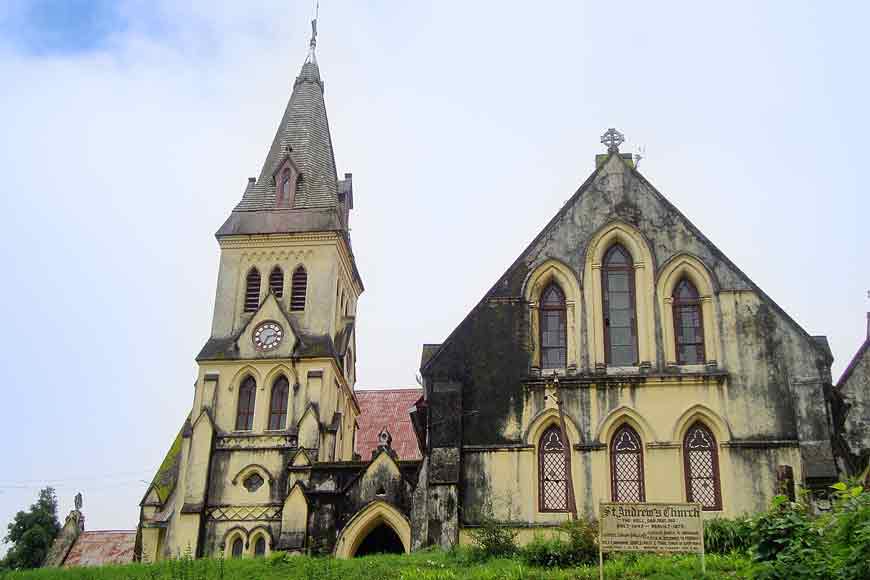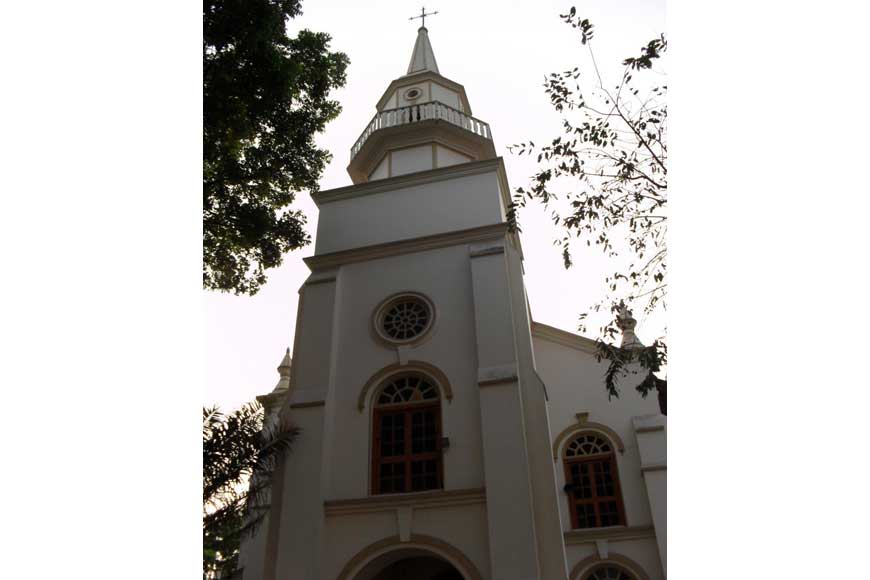On Christmas Day, a glimpse of Bengal's old churches – GetBengal story

St Paul's Cathedral
By all accounts, Christianity, which came to India’s Malabar coast just 52 years after the death of Jesus Christ, was unheard of in undivided Bengal until the early 16th century, when the Portuguese came calling. However, they and subsequent European settlers, including the British, made up for lost time by building a truly magnificent collection of churches and cathedrals, which continue to enrich our heritage and culture even today. The process was accelerated in the 19th and early 20th centuries, when prominent Bengalis such as Krishna Mohan Banerjee, Michael Madhusudan Dutt, Anil Kumar Gain, and Gnanendramohan Tagore converted to Christianity.
Here, then, at a glance, are some of the most prominent old churches of Bengal and Bangladesh, in no particular order:
1. St Paul’s Cathedral, Kolkata: A Church of North India (CNI) cathedral of Anglican background, the magnificent St Paul’s Cathedral is noted for its Gothic architecture and dedicated to Paul the Apostle. Completed in 1847, it is said to be the largest church in Kolkata and the first Anglican cathedral in Asia. It was also the first new-built overseas cathedral of the British Empire. The Indo-Gothic architectural design was intended to suit the Indian climate of India. Following the earthquakes of 1897 and 1934, the cathedral was reconstructed to a revised design

2. The Basilica of the Holy Rosary, Bandel: Commonly known as Bandel Church, this is one of the oldest Christian churches in West Bengal. Built in Bandel in Hooghly district as a memorial to the Portuguese settlement in Bengal, it was founded in 1599 and dedicated to Nossa Senhora do Rosário (Our Lady of the Rosary). Part of the Roman Catholic Archdiocese of Kolkata, it remains one of the most prominent historical churches in India.

3. St Andrew’s Church, Darjeeling: Named after the patron saint of Scotland, the foundation stone of St Andrew’s Church was laid in November 1843, though it was substantially rebuilt in 1873 following the extensive damage sustained by a lightning strike in 1867. Among the first members of the congregation at St Andrews were the Scottish soldiers and tea planters stationed in Darjeeling. With its magnificent clock tower, St Andrew’s is more than just an excellent example of British church architecture. It is also a monument to the development and evolution of Darjeeling itself.

4. St John’s Church, Kolkata: Originally a cathedral, St John's Church was among the first public buildings erected by the East India Company after Calcutta effectively became the capital of British India. It served as the Anglican Cathedral of Calcutta until 1847, when the see was transferred to St. Paul’s. Modelled on St Martin-in-the-Fields of London, the building was started in 1784, with Rs 30,000 raised through a public lottery, and was completed in 1787. Land for the church was gifted by Maharaja Nabo Krishna Bahadur of Sobhabazar. St John’s is Kolkata’s third oldest church, next to the Armenian Church of the Holy Nazareth and the Old Mission Church.
_04.jpg)
5. The Armenian Holy Church of Nazareth, Kolkata: An 18th-century Armenian Apostolic church, it is actually the oldest church in Kolkata, and serves as the centre of the Armenian Community in Kolkata and the seat of the Armenian Vicariate of India and the Far East. First built in 1688, it was rebuilt in 1724 on the old cemetery of the Armenian community, after the original wooden structure was destroyed by a fire in 1707.

6. St James’ Church, Kolkata: One of Kolkata’s most elegant churches, it is popularly known locally as ‘Jora Girja’, thanks to its twin spires which are visible from a long way away. Built in 1862, it replaced an older church of the same name situated in Nebutala Lane, near Amherst Street.

7. The Sacred Heart Church, Chandannagar: Situated near the Strand, the church was designed by French architect Jacques Duchatz, and inaugurated by Paul Goethals on January 27, 1884. The church is a remarkable example of French. architecture, and remains a major draw for historians and tourists alike

8. Patharghata Catholic Church (also known as Portuguese Catholic Church), Chittagong, Bangladesh: This beautiful church was established between 500 and 600 years ago. Apart from its historic value, its principal claim to fame is the tomb of Sir Henry Leland Harrison, a writer whose book ‘Bengal Embankment Manual’ was first published from Calcutta’s Bengal Secretariat Press in 1875. Born in 1837, Harrison died of cholera at on May 5, 1892.

9. The Armenian Church, Dhaka, Bangladesh: Also known as the Armenian Apostolic Church of the Holy Resurrection, it is a historically significant monument in the Armanitola area of old Dhaka, bearing testimony to the existence of a significant Armenian community in the region in the 17th and 18th centuries. When it was built in 1781, Armanitola was a thriving business district, and the site was an Armenian graveyard before the church was built..

10. Old Mission Church, Kolkata: Founded by Swedish Lutheran missionary Johann Zachariah Kiernander, the Mission Church was founded in 1770, making it the oldest Protestant Church in Calcutta, and the second oldest (after the Armenian Church) in the city. Kiernander paid for the church out of his own pocket, having bought land in 1767. When it was completed in 1770, Kiernander called it the Beth Tephilah (Hebrew for House of Prayer). However, locals called it ‘Lal Girja’ because of its brick-red finish. Some accounts of old Calcutta even say that Lal Dighi got its name from the reflection of the Lal Girja.










